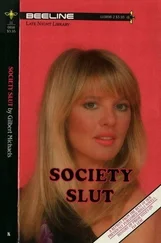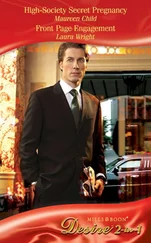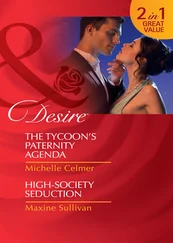The concept of value can be salvaged from the legacy of the classical concept of culture and allow us to think against the grain. Today, its restricted applications to the bourgeois high culture of the nineteenth century and later to the limited subsystem of “art and culture” are rightly regarded as narrow-minded. The classical, normative concept of culture had associated value with particular high-cultural practices of the bourgeoisie – with the practices of education and art appreciation – and presupposed that cultural critique could only be undertaken from this perspective. 5Its truly interesting legacy only comes to light, however, when one thinks about it abstractly and reconsiders the concept of value from a fresh cultural-theoretical perspective. Then it is possible to recognize that the value of cultural entities does not consist in the fact that a cultural critic finds them remarkable and has established their “objective value” but rather in the fact that these entities are valuable in the social world of the participants themselves. Culture exists wherever value is socially assigned.
The value-oriented concept of culture thus allows there to be a distinction, in an abstract form, between two different ways in which social entities are formatted by society: either as a cultural quality to which value is attributed, or as functional, standardized, and generalized entities of the social that are of instrumental use. Cultural entities are considered ends in themselves; they are regarded as having an intrinsic value of their own. In contrast, functional entities (functional objects, subjects, spaces, temporalities, and collectives) seem to be means to an end, and to this extent they have an extrinsic or instrumental structure. As to which specific entities are valorized and which are not, this is now an open question of social dynamics. Paintings, noteworthy places, or subcultures can become cultural entities just as baseball games, urinals (as in Duchamp’s example), religious relics, or nations can. The social logic of singularities determines what counts as particular and therefore as “culturally valuable.” Accordingly, there are also things in society that exist outside of culture – namely, those social entities that are regarded as valueless.
From what I have said so far, it is clear that the concept of culture is not the only thing that needs to be renewed. It is also necessary to dust off the concept of value if it is to become a matter of interest to contemporary sociology and cultural theory. Value should not be understood as a neo-Kantian value system that precedes praxis and motivationally guides it. This is not a matter of individual people or a society having certain values. Rather, the concept of value has to be understood in praxeological terms, so that the practices of valorizing individual objects become visible. 6Values have to be interpreted as part of the social dynamics of circulation. These are open-ended and often controversial; it is here where culture wars take place, which are essentially conflicts about valorization. In processes of valorization, entities of the social are singularized and de-singularized; they are assigned or denied inherent complexities. Here, elements of idiosyncrasies or the general-particular are transformed into singularities, but they can also lose this value in turn.
If the praxis of culture is roughly understood as a praxis of valorization and de-valorization, it will also become clear that the conservative connotations of the old concept of culture can be stripped away and that it is possible to develop a value-theoretical and heuristically fruitful perspective on the mechanisms of power and domination that are inherent to culture. In social processes of valorization, value is assigned and value is denied . In these processes of de-valorization or devaluation , which are also processes of de-singularization, it becomes clear that more or less subtle mechanisms of exclusion are at work in the cultural sphere. 7Whereas some social entities are recognized as valuable and unique, others remain invisible, are dismissed as general-particular, or are negatively singularized. In short: works of art, attractive cities, and remarkable people are not the only things that circulate in the sphere of culture; it also produces rubbish, flyover country, and white trash. De-valorization is a sort of devaluation that affects not only things/objects, places, and events but also subjects and collectives. Under modern conditions, it is no surprise that these cycles of valorization and devaluation do not form a monolithic block but rather always entail counter-valorizations and readjustments to the criteria of evaluation.
Accordingly, the cultural sphere creates not only (positive) singularities qua valorization but also, under certain circumstances, negative singularities . Of course, most social entities that never achieve singularization – the things that do not seem unique or the people who lack originality, for instance – remain invisible in the cultural sphere. This is not a matter of negativity but rather of indifference . 8Negativity, in fact, was a defining feature of normative rationalization and the logic of the general. Under that logic, people distanced themselves from that which did not follow the general pattern – from the particular and abnormal (which was in turn classified as a type). Beyond indifference, however, instances of strong devaluation can occasionally occur in the cultural sphere, so that something will be regarded as worthless or as a sort of “non-value” and thus be seen as problematic, threatening, or inferior. What is crucial here is that the “other” from which people keep their distance is in fact a singularity with inherent complexity, yet it has been endowed with a decidedly negative valence.
When they appear, negative singularities are met with considerable cultural, and above all narrative and aesthetic, interest. In the case of subjects, for instances, negative singularities have included serial killers, mass murderers, and terrorists, who tend to capture modernity’s cultural imagination. A less drastic example would be a troublemaker politician who attracts attention and negative recognition. Other subjects can become stigmatized singularities, which are more than mere abnormal types. 9It is also possible for places, events, and things to be negatively singularized: certain “no-go areas” in cities or entire problematic regions (West Virginia, for example, as the stronghold of hillbilly culture), repulsive and disgusting objects, violent rituals, or horrific historical events (such as the Holocaust). Finally, collectives can mutually perceive one another as negative singularities (fundamentalist communities versus liberal metropolitan culture). In the form of devaluation, de-valorization often involves a complicated dynamic. Here, in Julia Kristeva’s terms, the “other,” or the negative singularity, becomes something “abject” – an abject singularity and the object of condemnation. 10Negative singularities are closely associated with negative affects, but even more often with ambivalent – or even fascinating – horror.
With this we have come to yet another element that, in addition to the concept of value, has to be salvaged from the legacy of the traditional concept of culture in order to develop a contemporary conception of culture and culturalization: the affective character of culture. In the traditional understanding, which is familiar from the comparison between culture and civilization or society, 11culture was identified as a counterforce to formal rationality – as a non-rational or even irrational force that generates strong emotions and cannot be tamed by the rational and moderating rules of civilization. Although the opposition between culture and civilization may be obsolete today, the association of culture with the non-rational, the emotional, and its unpredictable possibilities can still be used analytically. As I have already noted, culturally endowed objects, subjects, places, events, and collectives function in a thoroughly affective manner; they exude a considerable affective intensity. 12Here, too, we can draw a connection to our analysis of the social logic of singularities: a central feature of singularized objects, subjects, etc., is their ability to affect people, whereas the entities in the realm of the logic of the general produce little if any emotions and are treated in an almost affect-neutral manner.
Читать дальше












